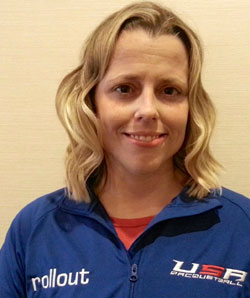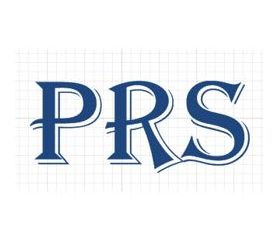
Congrats to Rocky Carson and Charlie Pratt on their win in the 2019 Men’s USAR National Doubles championships. Also, congratulations to Aimee Roehler Ruiz and Janel Tisinger-Ledkins on their win in the Women’s doubles draw.
With the win, these players qualify to represent the US in this year’s two International Racquetball Federation – IRF events: the Pan American Racquetball Championships in Columbia in April, and the Pan American Games in August in Peru.
Both teams are no strangers to international competition nor National doubles championships: combined these four champions now have an astounding 29 combined US national doubles titles between them.
These titles represent the nth title for each player:
– Carson: 11th career National title. He won 6 with Jack Huczek, then has won 1 each now with Ben Croft, Jose Diaz, Jose Rojas, Sudsy Monchik and now Pratt. Rocky won his first title in 2004. He now sits 5th for National doubles titles world-wide.
– Pratt: This is his 1st National doubles title; he’s made the semis a few times in the past with various partners in National events, and has one pro IRT doubles title (with Jansen Allen in 2016).
– Ruiz: 12th career National title. She won 2 with Laura Fenton, 5 with Jacqueline Paraiso-Larsson, and now 5 with Tisinger. She is tied for 3rd globally for National doubles titles with Canadian Jen Saunders. First place is Canadian legend Josee Grand Maitre with 15 career national doubles titles, and 2nd all time is Ruiz’s former partner Paraiso, who has 14.
– Tisinger earns her 5th title, all with Ruiz.
Click here for a list of all Amateur national doubles champions for the three major countries: http://rball.pro/4A22B0
————————————-
Men’s doubles match report in the database: http://rball.pro/9BA2E3
Quick summary of the Men’s draw: the semis were chalk according to seeds: there #3 seeded Jake Bredenbeck and Jose Diaz took out #2 seeded Bobby David Horn and Mauro Daniel Rojas to reach the final. There, the two finalists split games and headed to a tie-breaker, eventually taken by the champs 11-7.
Women’s doubles match report in the database: http://rball.pro/E5DEC6
Quick summary of the Women’s draw: it was upsets galore here, with the 5th seeded team of Michelle De La Rosa and sister Danielle Maddux upsetting defending champs and #1 seeds Kelani Lawrence and Sharon Jackson in an 11-10 tiebreaker win en route to the final. On the other side, 3rd seeded Ruiz/Tisinger took out 2nd seeded and last year’s finalists Rhonda Rajsich and Sheryl Lotts in a tiebreaker to get to the final. The final was a 2-game win for the veterans.
—————————–
The Tempe event also had a singles component, with players competing for qualifying points towards representing the USA in singles. Here’s a quick run-through these draws:
On the Men’s side, #1 seed Carson topped #2 Pratt in two games to take the draw. There were a few notable upsets by seeds in the earlier rounds (Thomas Carter over Mauro Rojas, and Erik Garcia over Robert Collins being perhaps the biggest), but the semis-onward more or less went as expected.
On the Women’s side, the #1 seed Rajsich also took the draw, taking out #3 seeded Lawrence in a rematch of the last two such National level singles draws. The quarters featured two pretty significant results: Hollie Scott trounced Sheryl Lotts in the quarters, and doubles specialist Tisinger took out #2 seeded Sharon Jackson 11-10.
(Reminder: I do not enter these non-National results into the database).
—————————–
Lastly, a bit of opinion expression from yours truly based on a situation that arose and was talked about in some of the FB groups.
This was the USA National Doubles Championships. It determines the United States champions in the various divisions and helps select representatives (in both singles and doubles) of our country in international competitions.
So why were there foreign nationals who represent other countries internationally in the draw?
A bit of history: the “US National championships” were, for a time, open to all countries. In fact, the US National amateur singles champs in 75 and 75 were both Canadians (Wayne Bowes and Lindsay Myers respectively). In 82 the then named “AARA” changed the requirement to have the US national singles only be open for US citizens. This is (coincidentally or not) right around the time that the first “international” championships were held; in the 1970s there was just the tournaments held in the USA, and even the professional year end championships declared “National champions.” I don’t ever recall a situation where there was even a question about someone’s citizenship competing for the USA national team … until now.
It says pretty clearly on the entry form that you have to be a US citizen or “have a citizenship application in process.” Understood; some people hold dual citizenships. But how is it possible we’re letting players who have represented other countries internationally (quite recently) compete in the US championships?
There were three examples of this situation this past weekend:
– Sebastian Fernandez: He competed in US team qualifying in doubles. Fernandez represents Mexico in juniors, where he was the runner-up in Junior worlds just last November, entered Mexican National Singles last February, and entered the Mexican World Selection event in June. How is he competing in a tournament to represent the USA just a couple months later?
– Erik Garcia: hails from Chihuahua, now attending college in the USA … and represented Mexico in Junior worlds in 2013 and competed in Mexican amateur nationals in 2014. Yet he was entered into BOTH singles and doubles USA national team qualifying events.
(Note: post publishing i’ve been informed that Garcia is in fact a US Citizen, born in US. Which then begs the question; how is he playing in Mexican national events? Its the same issue but perhaps in reverse).
– Melania Sauma Masis: has been representing Costa Rica in various junior and senior events since 2009, including playing in the 2017 PARCs and the 2018 Caribbean games. Clearly grew up in CRC, but now attends the host college of this past event (ASU). Less of an issue for Sauma Masis in that she didn’t compete in the National team events (since the application says that “all other divisions are open to US Citizens and residents) … but she did compete for a “US National title” against US citizens, which some have a problem with.
I get that these players may have dual citizenship, which technically would have allowed them to enter the tourney (it was reported that Fernandez does; but I’m not sure how the other two possibly would). I suppose the bigger question is this: how can someone just switch back and forth like (especially) Fernandez has done? Olympic athletes can switch … but they have to wait a few years in-between competitions. Professional Soccer players can switch from one country to another, but only once, and only before officially representing a country at the senior/adult level (at which point they are permanently “capped” to a specific country).
Internationally, there’s a long history of players switching countries. Among others, Ruben Gonzalez, Veronique Guillemette, Natalia Mendez, Mario Mercado, Maria Jose Vargas, and most recently Brenda Laime have switched countries … but i’m not aware of anyone switching to and back like we’ve now seen out of Fernandez over his career.
To take this to the extreme, consider these hypotheticals. Daniel De La Rosa is married to a US citizen and now lives in Arizona (I have no idea if he now has a US passport, if he’s applied for citizenship, etc; this is a hypothetical). He has always and continues to represent Mexico … but lets say DLR plays in Mexican Nationals in February and gets knocked out early but really wants to go to Peru for the Pan Am games. Would you be ok with him then entering USA nationals in May to try to earn a spot? Also hypothetical: Kane Waselenchuk has now lived in Texas nearly as long as he lived in Canada, and marred a US citizen years ago; would you be ok if he entered US Nationals in May?
I think we need some guidelines going forward, where players have to declare to represent one country or another and stick with it. I’m ok with switching countries, but you have to have a legitimate connection, and you have to “sit out” a period of time to prevent venue shopping for IRF representation.
PS: I want to emphasize this point; i’m not making a political statement here. Its more about the inherent conflict of interest that exists.


One Reply to “USA Racquetball National Doubles Wrap-up”